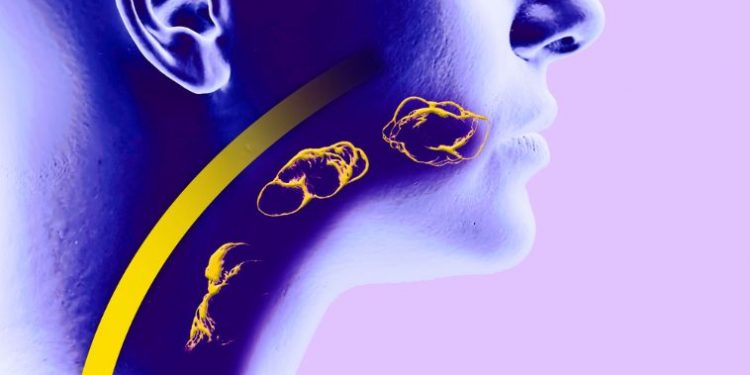Your doctor will ask about your symptoms, perform a physical exam and perform diagnostic tests to help diagnose salivary gland disease or tumors.
The most common type of salivary gland cancer is mucoepidermoid carcinoma, which grows slowly and mainly starts in your parotid glands (the two glands that sit behind your mouth). It tends to happen more often in older people than in younger ones. It can also occur in people who have had radiation therapy for head and neck cancers or who have a history of certain infections, such as Epstein-Barr virus or human papillomavirus.
Adenoid cystic carcinoma is the second most common form of salivary gland cancer. It typically grows slowly, is usually low grade, and can be difficult to remove completely because it tends to spread along nerves. It can be cured, but sometimes it comes back many years later after treatment (usually surgery and radiation).
Acinic cell carcinoma is the third most common type of salivary gland cancer, and it grows more slowly than mucoepidermoid and acinic cell carcinomas. It usually starts in your parotid glands, but it can also develop in other parts of your mouth. It is often diagnosed at an earlier stage, so it may be easier to treat.
Other salivary gland cancers include sarcomas, which develop in the muscles and blood vessels that line your parotid and submandibular glands. These cancers are less likely to cause problems if they start in your salivary glands, but can occur elsewhere in your body and spread to your salivary glands (called secondary salivary gland cancer).

Salivary gland tumors that grow rapidly are often malignant. They can invade and destroy nearby tissue and spread (metastasize) to other areas of the body, such as the lungs or bone tissues. They can also cause weakness and numbness in your face or throat.
They can also be painful or cause a burning sensation when they touch your teeth, nose, and lips. Other signs and symptoms include difficulty swallowing, an unevenly shaped tongue, or pain in your mouth or jaw.
The best way to detect the presence of a salivary gland tumor is to have your doctor perform a physical exam and take X-rays of your head and neck. The exam may reveal an abnormal mass, and doctors will use a CT scan or magnetic resonance imaging (MRI) to determine its size. They will look for signs of tumor spread, such as new lesions or changes in the lymph nodes in your neck.
Symptoms that can be caused by salivary gland tumors include swelling or a lump in your salivary gland, pain or a change in the way your mouth feels, or trouble chewing or swallowing. If the tumor is causing problems, your doctor will recommend treatment to eliminate it and relieve symptoms.
The most effective treatment for most salivary gland tumors is surgery to remove the tumor and any surrounding tissue. The surgeon will also remove any nerves that are connected to the tumor. This surgery can be done in the mouth or on the neck. Other options include radiation therapy and chemotherapy. Chemotherapy is a good option for patients with advanced salivary gland tumors that are not responding to other treatment. It is also used to prevent or slow the growth of new tumors and improve your quality of life.









